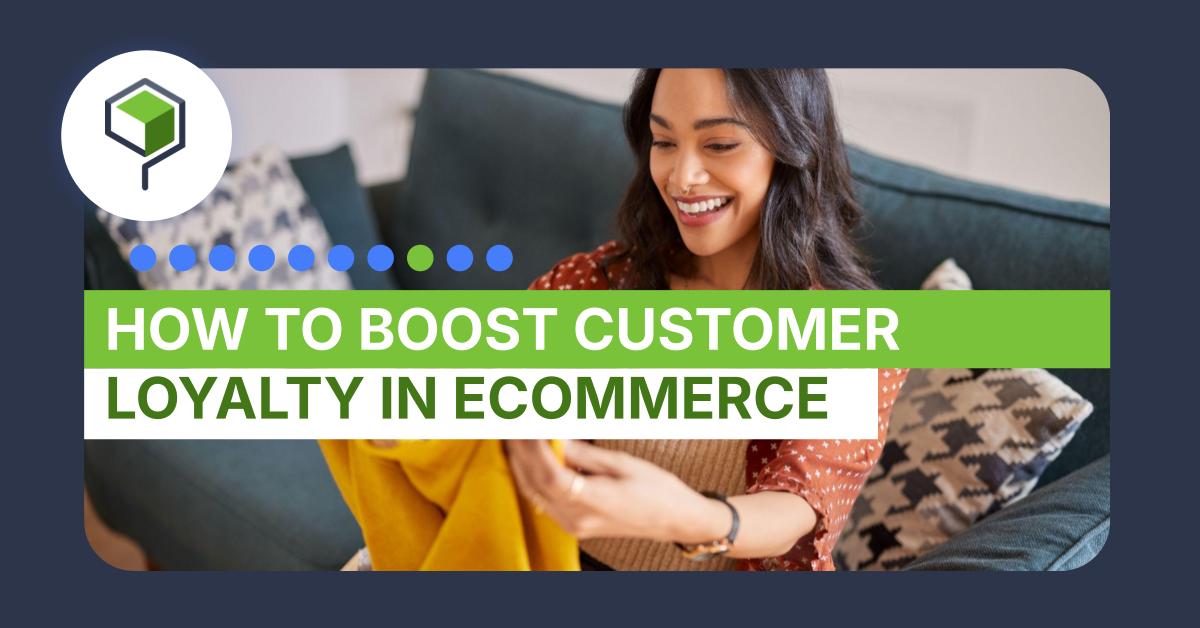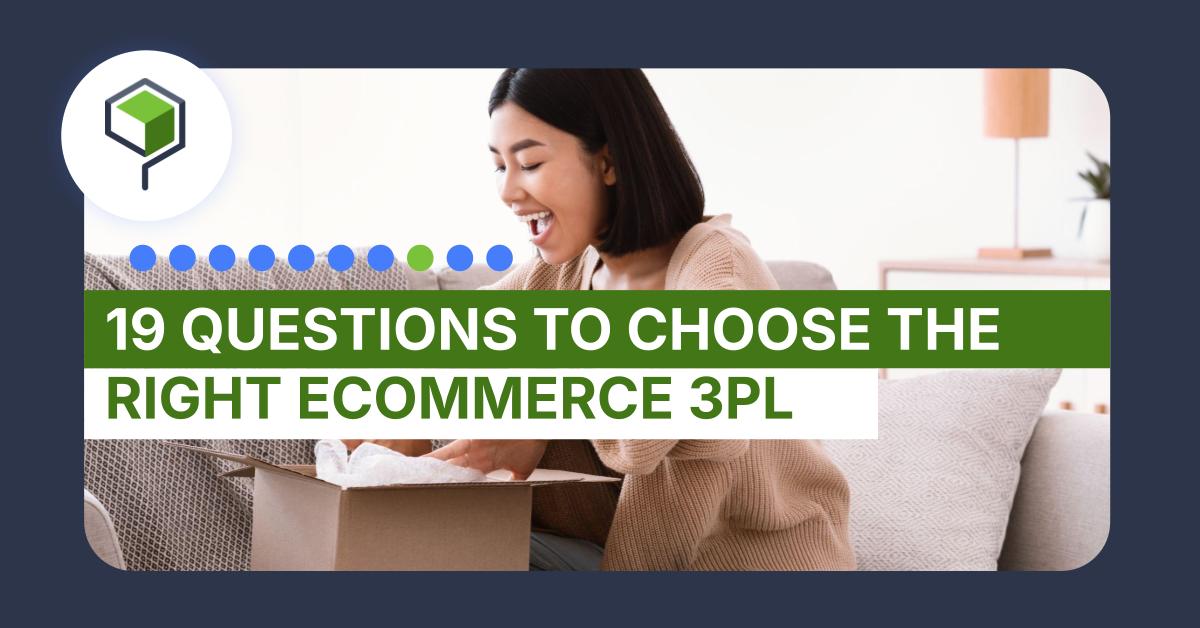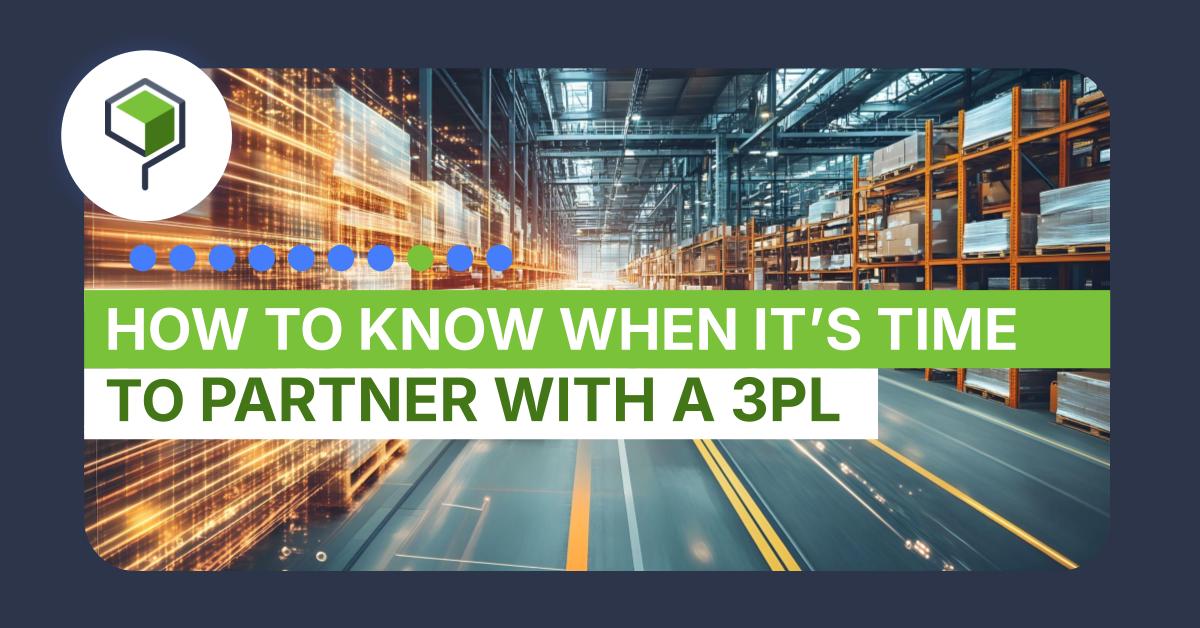How to Boost Customer Loyalty in Ecommerce

If you’re thinking of starting an ecommerce business this year, or expanding new product lines to your online brand, you’re in good company.
With the online shopping industry growing 10.14% annually, and U.S. sales expected to reach $6.56 trillion in 2025, strengthening your brand and retaining customers is key to continued success.
But with all the things involved in managing your products and ensuring a positive online presence, there’s little time left to focus on brand loyalty and keeping customers from falling into the cracks.
Oversaturated Is an Understatement
Today, more consumers shop online than not. And while the odds of getting your brand the attention it deserves seem in your favor, countless sellers have flooded the digital marketplace, hoping to attract the same set of customers.
Trendsetters like Amazon, eBay, and Alibaba dominate by offering a full range of products, at hard to beat prices. Settling your brand into a niche market can help your products stand apart, but there are other strategies available to differentiate and escalate your brand too.
The first step to gaining customer loyalty is in improving the accessibility and visibility of your products. Through innovation, creative offerings, and consistent social proof, customer loyalty in your ecommerce business can be a cornerstone to your brand, and the envy of your competitors.
Shopping Carts Are Ecommerce Exit Polls
Research data from Dynamic Yield shows a global average abandoned shopping cart rate of 75.02%, which may have you wondering why so many online customer experiences are left hanging on the screen? It’s the kind of information inquiring ecommerce minds want to know but are afraid to ask.
Reasons Behind a Customer’s Exit
If you’re hoping to increase conversions, you’ve likely invested in ways to make it happen: more website bling to enhance the user experience or maybe social media mentions from the free product you gave celebrities attending a Hollywood awards show. Despite your efforts, shopping cart abandonments can wear on you.
There could be any number of reasons why customers leave your site empty-handed:
- Higher than expected shipping fees
- Confusing check out
- Sketchy website, questioning cybersecurity practices
- Slow or glitchy load times
- Just not ready to purchase
These factors can single-handedly and collectively prompt cart abandonments. You can take measures to correct some of the issues, though timing for a customer has a lot to do with purchase decision-making. For example, if your products are priced affordably and there are more conversions during the middle or end of the month, it could be stronger buying power around workforce paydays.
Clues to cart abandonments show up earlier in the buyer journey—by understanding who your brand audience is, the products that matter to them most, and why.
Knowing Your Audience Is Essential to Customer Loyalty
Trying to figure out who your audience is can sound complicated, but it doesn’t have to be. In fact, depending on the amounts of products your brand offers, you could have many different audiences. You can find them by using data analytics and other information metrics to draw the details of your preferred buyers and create what’s known as your buyer personas.
Think of the buyers in your audience as new friends you want to get to know. Some of the same questions you might ask someone about their history, what they like and don’t like, and what makes them tick are discovered through data gathering.
Here is some of what you can learn about your audience:
Demographic Data: Age, gender, average household income, education level, and occupation helps you understand who is interested in your products and what might be the pain points stopping them from finalizing a purchase.
Geographic Data: There’s something to be said about the word glocalization. Although your audience originates from many cities across the country, your online presence is across the world. Knowing where your customers live can play a role in which products you decide to feature on your website in various locations. The geographic distances will also impact your shipping strategies and area promotions too.
Behavioral Data: There’s a history behind each member of your audience that tells a personal story. Before arriving at your site, what have they bought and from what ecommerce company? Do they have repetitive browsing patterns or random? Do they respond to marketing campaigns promoting discounts or just arrived products? The more you know about audience behaviors, the better you can identify products to catch their interest and when they are more likely to shop.
Psychographic Data: Behind every brand is a lifestyle. Your customers may have similar interests, attitudes and values. By understanding these characteristics of your audience, you’ll have signs about how they live, what inspires them about your brand, and what it would take to secure their customer loyalty. Once you hone in on this data, it can be your blueprint for marketing efforts: how to speak your customers’ language through words and imagery.
Transactional Data: If you review your own personal shopping purchases, it tells a lot about you. Data also chronicles how often you buy, the total of each order, and the payment methods used. This information helps brands create product bundles and other offers that meet the way your audience already shops, adding familiarity and convenience to the transaction experience.
What They’re Saying: Establishing and growing ecommerce brands complement customer loyalty campaigns. But to connect your brand with an audience, keeping a pulse on what they say about you is a window into what’s working and what isn’t. It’s good to go over product reviews and customer feedback. Look for consistencies in product preferences, positive customer experiences, and where ecommerce retailers can improve.
By leveraging these consumer data categories, ecommerce businesses can find a competitive edge toward consumer connectivity, and rein in customer loyalty.
7 Steps to Brand Loyalty and Customer Wins
When customers feel valued and understood throughout the shopping experience, their brand trust strengthens, increasing the likelihood they’ll come back for more. Achieving customer loyalty takes time, and by integrating the following 7 steps to your ecommerce operations, business growth and brand advocacy will come naturally.
Keep it Personal
Although there are many people in your audience, you want to treat each customer as if they’re the only one in the room, because they are. Whenever possible, create a tailored shopping experience with their individual preferences.
Add in product recommendations or special discounts you know they appreciate (remember their historical data). It’s one of many ways to reinforce that they matter to you and the brand, feel seen, and appreciated. This personal touch can significantly enhance the customer’s connection with the brand.
Create Seamless User Experiences
Imagine the impact you can make when every stop along the customer journey is full of excitement, where quality products meet online expectations, and time spent canvassing product pages and customer testimonials leads to interest in learning more.
Test your ecommerce site often and view it from laptops, tablets and mobile phone devices to ensure each experience is user-friendly and represents your brand well. Customers who enjoy online shopping on your site are more inclined to end their visit with a purchase.
Prioritize Customer Support
Nothing says customer service like “help”. No matter how error-free your online systems and cart software promise to be, customers are human. All it takes is a moment to click too soon, ignore the quantity button, or select the wrong form of payment or mailing address, and the order fulfillment experience can go sideways.
Ensuring great customer service means your audience never has to question whether you’ll be there giving prompt and positive responsiveness. And with the right tools and technologies, an order fix could turn into a larger order simply by treating the customer right.
Make Unboxing Memorable
Christmas does arrive every day of the year. It can, when your ecommerce brand goes up a level and delivers a memorable unboxing experience. Extra care in the kitting, packing, and bundling effort goes a long way in earning ecommerce customer loyalty. And by including personalized messaging or a special offer on a product you know they’ve almost bought in the past, they’ll swear you’re crushing on them.
Share Your Values
Ecommerce brands are becoming more conscientious about their products, how they’re made, where the materials are from, and their cultural and sustainability footprint to society. The emotional story behind a brand can drive customer engagement and loyalty. If your business hasn’t established its core set of values, think deeply to create them. People are seeking common values in their brand preferences and sharing those with them fosters long-term loyalty.
Reward Them Often
With all the choices available in the digital shopping space, even loyal customers seek reasons to remain that way. By offering special programs and incentives, customer loyalty is continually nurtured. It could be early access to goods before they officially launch or limited-time only discounts to products that sell out quickly, customer rewards are reminders of how special they are.
Leverage Social Media
Your products and your ecommerce brand are just a piece of the business community you create. Customers are members of that community and want to be included in what you’re up to and what’s to come. Engaging your audience through social media and other digital communications, including newsletters and emails, helps customers build a sense of belonging and a desire to stand behind your name.
Boost Ecommerce Customer Loyalty with a Trusted 3PL Partner
To further leverage your brand and strengthen ecommerce customer loyalty, partnering with a trusted 3PL provider can take these top-rated practices, listed above, and magnify their benefits.
The online shopping experience is made more personal after the order fulfillment and delivery process begins, giving your customers much-needed personal interaction with your brand.
By working alongside a 3PL partner like ShippingTree, the seamless fulfillment journey you want is backed by the KPIs you need, like accurate orders, damage-free products, and on-time delivery.
And with the longstanding strategic logistics relationships cultivated across the country, ShippingTree has the tools, technologies, processes, and people to support your customers, and provide cost savings by optimizing packaging, negotiating better shipping rates, and more.
Start engaging greater customer loyalty by working with a reliable ecommerce order fulfillment and logistics partner.



